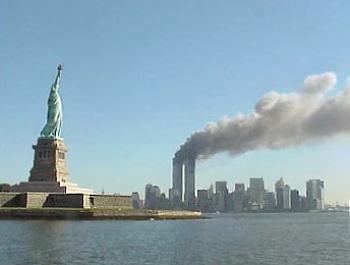
“I don’t care if it’s constitutional or not at this point,” Cleveland police union president Stephen Loomis told CNN as Republicans gathered in his city for their 2016 national convention. “I want [Ohio governor John Kasich] to absolutely outlaw open-carry in Cuyahoga County until this RNC is over.”
Kasich, to his credit, demurred, responding “Ohio governors do not have the power to arbitrarily suspend federal and state constitutional rights or state laws as suggested.”
“Open carry” — that is, legal recognition of the right to carry a weapon without concealing it from view — is a hot topic this week, not only due to Loomis’s appeal for suspension of the US Constitution in Ohio, but in the aftermath of a July 17 gunfight in Baton Rouge, Louisiana in which three police officers and a former US Marine from Kansas City were killed.
The police version of the Baton Rouge incident is that 29-year-old Gavin Long “lured” police officers to his location where he “intentionally targeted and assassinated” them. Left unexplained is why several officers rushed to his location on the basis of a 911 call (not made by Long himself) reporting something perfectly legal in 44 states, including Louisiana: A man carrying a gun.
Yes, perfectly legal. Only California, Florida, Illinois, New York, South Carolina, and the District of Columbia prohibit the open carry of firearms. Some other states require a permit, but those schemes as well as the prohibitions are clearly unconstitutional.
Did Long “lure” police officers to their “assassinations” or did he respond to actions he perceived as an armed attack by police in a city on edge since the July 5 police killing of a black man, caught on camera? We may never know. But we can and should draw this lesson from Baton Rouge and from Cleveland:
For some reason, police seem to consider open carry of firearms, even where formally legal (the US Constitution says it’s legal everywhere in America, but that’s another column), to constitute prima facie evidence of criminal intent. It isn’t, and treating it as such can only lead to unnecessary violent outcomes.
More than 100 million Americans own more than 300 million guns.
An infinitesimal portion of those gun owners commit crimes using those guns, and that tiny criminal fraction would do so whether open carry (or concealed carry) was legal or not, because committing crimes is what criminals do.
It neither is nor should be the responsibility of millions of non-criminal gun-owning Americans to coddle and cater to hoplophobia (“a mental aberration consisting of an unreasoning terror of gadgetry, specifically, weapons”) on the part of their fellow citizens, or especially of their putative employees, the police.
Guns, and gun owners, are here to stay. Get used to us.
[Correction: The original version of this op-ed listed Texas as a state prohibiting open carry. Thanks to MamaLiberty for letting me know that Texas now has a “permit” system under which open carry is legal – TLK]
Thomas L. Knapp (Twitter: @thomaslknapp) is director and senior news analyst at the William Lloyd Garrison Center for Libertarian Advocacy Journalism (thegarrisoncenter.org). He lives and works in north central Florida.
PUBLICATION/CITATION HISTORY
- “In Support of the Open Carry Society,” by Thomas L. Knapp, Ventura County, California Citizens Journal, 07/21/16
- “In support of the open carry society,” by Thomas L. Knapp, Pahrump Valley, Nevada Times, 07/22/16
- “In Support of the Open Carry Society,” by Thomas L. Knapp, Uintah Basin, Utah Standard, 07/26/16


